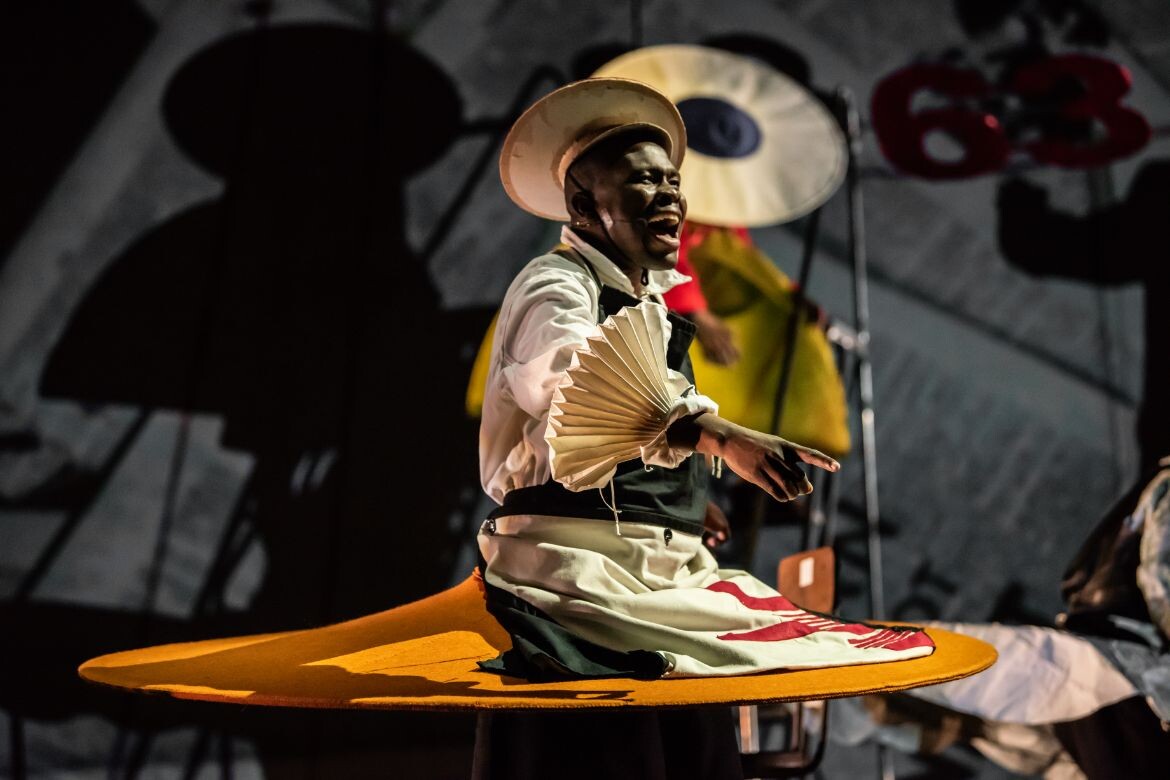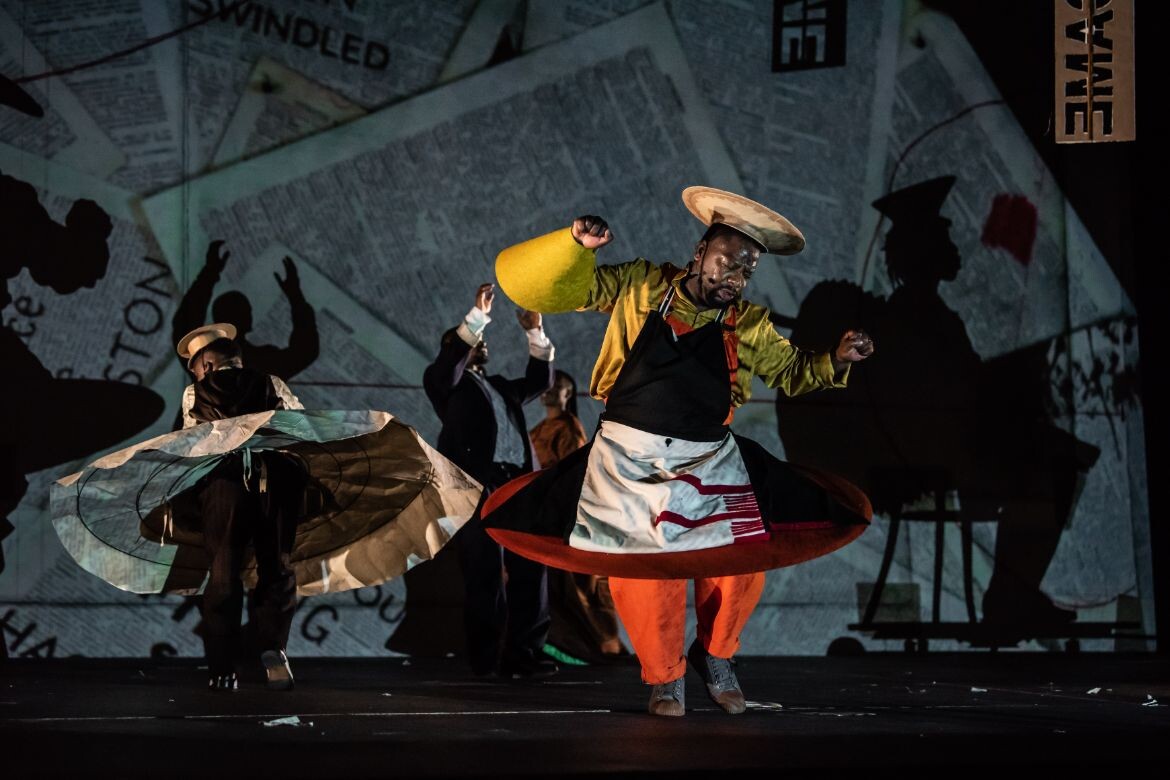What began in creative response to Alexander Calder’s 1960s opera, has blossomed into a two-part opera that reveals the creative genius of artist William Kentridge. For ‘Sibyl’, he brings new vision to set design, fusing opera, animation and live performance to enrapture audiences.

October 30th, 2023
In the world of contemporary opera, the name William Kentridge stands out as a beacon of creativity and innovation. The South African artist, renowned for his extraordinary drawing, animation, and filmmaking, first ventured into the realm of opera with his glorious and ground-breaking production of Shostakovich’s ‘The Nose’ for the 2009-2010 New York Metropolitan Opera season.
This has now been followed by ‘Waiting for the Sibyl’, which made its debut in 2019 at the Teatro dell’Opera di Roma, and forms one part of William Kentridge’s two-part opera being performed exclusively at Sydney Opera House – and it was sensationally, exuberantly, poignantly brilliant. The performance held the audience rapt as the stage erupted in movement, voice and Kentridge’s signature artworks.

Part one, The Moment has Gone, saw Kentridge’s artwork animating the backdrop to four singers and pianist. Every note was perfection with Kyle Shepherd’s live piano score and an all-male South African chorus led by Nhlanhla Mahlangu. The projected artwork that shuffles between animation and film of the artist working, flows from mine camp to art museum with each dissolving into ruin as Alexander Calder’s mobil gently takes form and starts to rotate.
Part two, Waiting for the Sibyl, erupts with dance and wild shadow projections from the nine dancers/singers wending their way through six scenes. The idea of fate is central to each piece with overlays of delight, confusion, awe, excitement and ultimately joy sung and danced to perfection. Touching back to the central theme of fate, the opera asks over and over what it is to be alive, with text and image, graphics and the extraordinary rotating shadows of human exuberance. Simply brilliant.
Kentridge was invited by the Rome Opera to create ‘Waiting for the Sibyl’ as the second part to an evening performance that would commence with Alexander Calder’s 1960s opera ‘Work in Progress’. In this seminal piece Calder’s signature mobiles are interspersed by people on bicycles in what Kentridge describes as “very much the world of Calder’s moving objects”.

‘Waiting for the Sibyl’ takes ‘Work in Progress’ at as a starting point, with Kentridge’s opera a direct response to Calder. “We have human mobiles, not the random turning of images that Calder had, but images turning and coming together for one moment making a kind of coherent search as a response and an answer and homage to the Calder piece, which is a very beautiful piece,” says Kentridge.
The pairing however could not be toured. “The mean spiritedness of the Calder foundation made it impossible,” says Kentridge, who created a new first half ‘The Moment Has Gone’ to complement ‘Waiting for the Sibyl’. The pairing is now known collectively as a two-part performance called ‘Sibyl’, while gently enveloping Calder’s work: “And so we made a new first half to it, which connects in the drawings and some of the text in the way it works to ‘Waiting for the Sibyl’. It’s a bit like rhyming slang, where after a certain point, you stop using the rhyming part and people have to intuit it: the Calder piece is no longer there but hidden in our piece or hidden in plain sight,” says Kentridge.

This new first act, ‘The Moment Has Gone’, with a live score by Kyle Shepherd (one of South Africa’s leading progressive pianists and composers,) comprises a short film, piano and the all-male South African chorus led by Choral Director Nhlanhla Mahlangu. Kentridge’s unique charcoal animation of erasure and overdrawing, sets the scene between a municipal art museum and an abandoned mining area where unofficial artisanal gold mining takes place. Here, Kentridge’s alter ego Soho Eckstein comes face to face with his fate.
The second part, ‘Waiting for the Sibyl’ was created in collaboration with Nhlanhla Mahlangu and Kyle Shepherd. Here, the Sibyl storyline revolves around the eponymous character, inspired by the Cumaean prophetess Sibyl, who would write the fate of her visitors on an oak leaf, only for the prophecies to be whisked away by the wind, leaving the asker uncertain if they were learning another’s fate or their own. Grappling with this paradox, the audience is drawn into a complex narrative that delves into the human condition, the mysteries of time, and the cyclical nature of history.

“The statements within the piece like Start Dying; Start Dying Optimistically; Assiduously; Optimistically, is where we find ourselves, not denying fate, but also having to live in spite of fate,” says Kentridge, who has realised this flux as an assault of swirling text and image projected as part of the performance. “We are caught both with an agency and an understanding of where our agency ends. We all know that there’s only one ending as they say, colloquially, no one gets out of this alive. But nonetheless, we have to live the rest of our life as if there is a future, as if that is not unnecessary even though we know it is. And this is the paradox of where we find ourselves”
Kentridge’s signature style of distinctive ink drawings and charcoal animations, plays a central role with visual elements projected onto screens as a dynamic backdrop to the live performers on stage. This convergence of live theatre and visual art creates a captivating, immersive experience, where the boundaries between reality and illusion blur, mirroring the Sibyl’s own prophecies. Kentridge’s visionary masterpiece will enrapture audiences with its extraordinary fusion of opera, animation, and live performance.

Celebrating 50 years with Sydney Opera House
Sibyl is part of the Sydney Opera House 50th birthday festival celebrated throughout October 2023. As a symbol of modern Australia, the Sydney Opera House is a World Heritage-listed masterpiece, recognised widely as existing thanks to a few brave individuals who dared to think differently.
From conception to completion, the building tested the limits of engineering, construction and design. When the Opera House opened its doors in 1973, changing the image of Australia, a new era of cultural discovery and community engagement began.
Sibyl runs at the Sydney Opera House, 2-4 November 2023.
Sydney Opera House
sydneyoperahouse.com
Photography
Stella Olivier, David Boon

We think you might like this article about Jonathan Dalton’s sharp, sensitive grip on reality.
A searchable and comprehensive guide for specifying leading products and their suppliers
Keep up to date with the latest and greatest from our industry BFF's!

Following its successful inaugural event in early 2024, the Vietnam International Trade Fair for Apparel, Textiles, and Textile Technologies (VIATT) is gearing up for its next instalment in 2025.

In this candid interview, the culinary mastermind behind Singapore’s Nouri and Appetite talks about food as an act of human connection that transcends borders and accolades, the crucial role of technology in preserving its unifying power, and finding a kindred spirit in Gaggenau’s reverence for tradition and relentless pursuit of innovation.

BLANCO launches their latest finish for a sleek kitchen feel.

Within the intimate confines of compact living, where space is at a premium, efficiency is critical and dining out often trumps home cooking, Gaggenau’s 400 Series Culinary Drawer proves that limited space can, in fact, unlock unlimited culinary possibilities.

Cult has a new home, albeit temporary, and it’s sensational with masses of room to move, beautiful furniture and accessories to explore.

GEYER VALMONT recently threw a party celebrating the official launch of their unified brand, 20 years of Valmont and the opening of a new home in the heart of Sydney CBD.
The internet never sleeps! Here's the stuff you might have missed

Tech-accounting firm Hnry partnered with DGSE to transform their Wellington office into a bold, creative hub, brought to life with Milliken carpet flooring.

The beauty of design often lies in its visual brilliance – the mesmerising forms, colours, and textures that ignite our collective imagination. But beneath the surface resides the quiet engineer of design integrity that ultimately determines its relevance and enduring impact: authenticity.